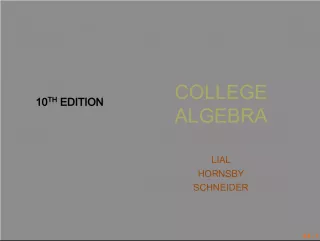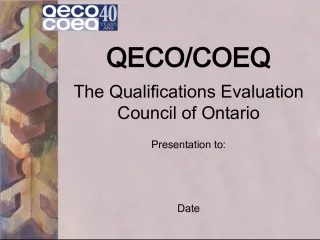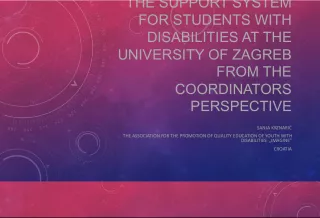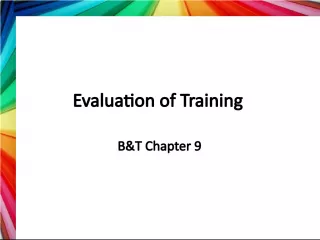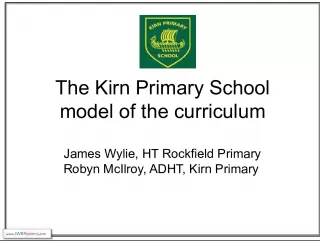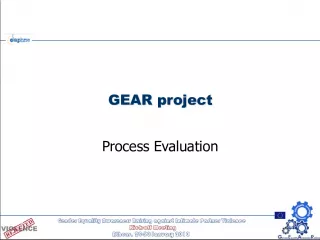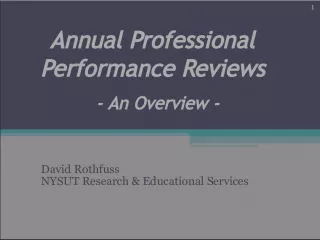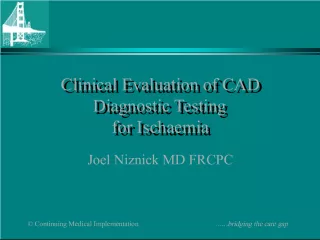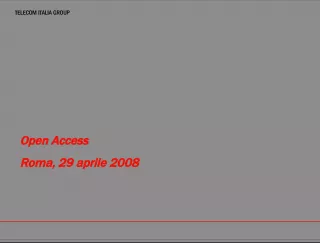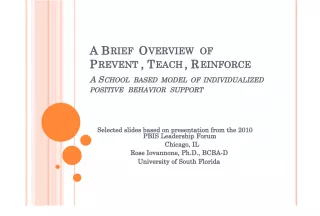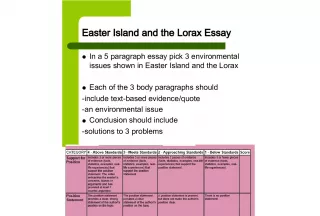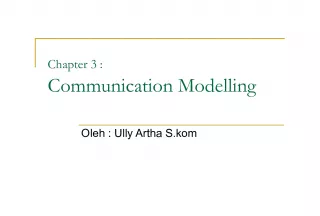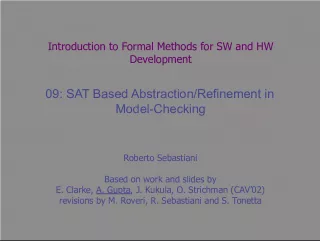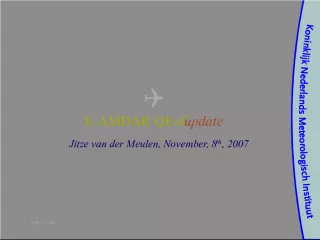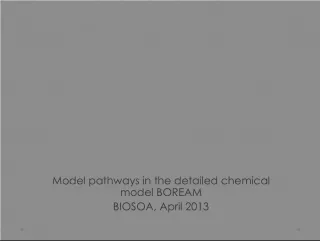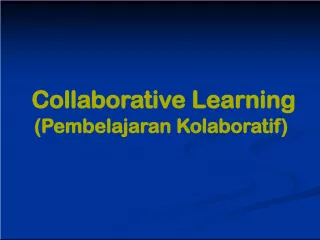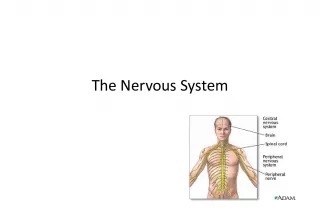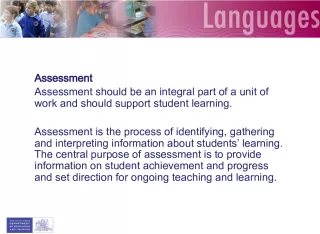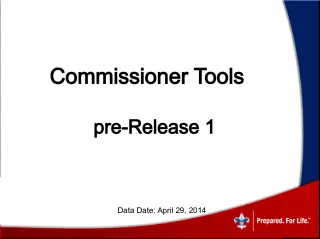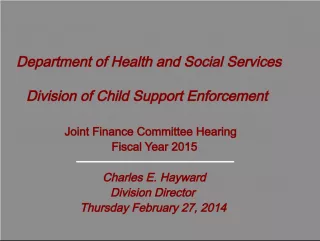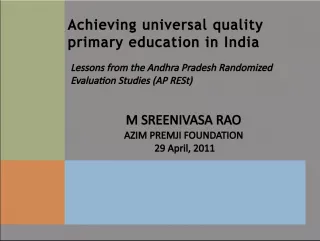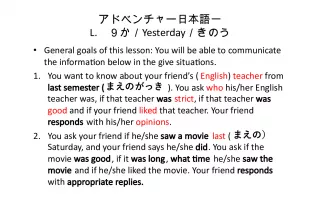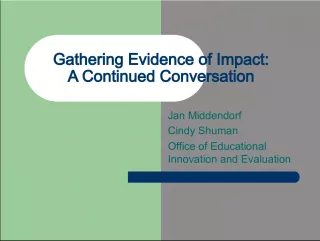Rhode Island Model Teacher Evaluation Support System Edition III
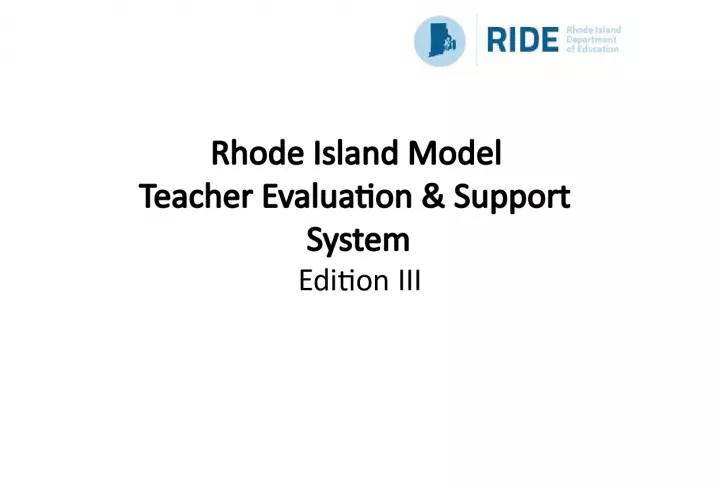

This training session will provide participants with an understanding of the Professional Practice and Professional Responsibilities Rubrics, the Support and Development Process, the purpose of setting SLOs, and how a teacher's effectiveness rating is calculated.
- Uploaded on | 3 Views
-
 amiragrimes
amiragrimes
About Rhode Island Model Teacher Evaluation Support System Edition III
PowerPoint presentation about 'Rhode Island Model Teacher Evaluation Support System Edition III'. This presentation describes the topic on This training session will provide participants with an understanding of the Professional Practice and Professional Responsibilities Rubrics, the Support and Development Process, the purpose of setting SLOs, and how a teacher's effectiveness rating is calculated.. The key topics included in this slideshow are Rhode Island, Model Teacher Evaluation, Support System, Professional Rubrics, SLOs, Educator Evaluation,. Download this presentation absolutely free.
Presentation Transcript
1. Rhode Island Model Teacher Evaluation & Support System Edition III
2. Objectives Participants will: Understand the architecture and key terms of the Professional Practice and Professional Responsibilities Rubrics Become familiar with the Support and Development Process Develop a common understanding of the purpose of setting SLOs Understand where SLOs fit into the big picture of Educator Evaluation Understand how a teachers final effectiveness rating is calculated
3. Agenda Model Overview Support & Development Professional Practice Professional Responsibilities Student Learning Objectives Calculating a Final Effectiveness Rating
4. Full Model at a Glance Element Minimum Requirements Evaluation Conferences 3 evaluation conferences between the teachers and the evaluator (Beginning, Middle and End-of-Year) Classroom Observations At least 3, including: 1 announced and 2 unannounced All observations must be at least 20 minutes each Each of the 8 Professional Practice components will be scored after each observation Written feedback is required after each observation Professional Growth Goals At least 1 at the beginning of the year Student Learning Objectives At least 2 per teacher (no more than 4) RI Growth Model Rating Not included as part of a teachers Student Learning Score in 2014-2015
5. Professional Growth Plan Evaluation Conferences Ongoing reflection and planning Final Effectiveness Rating Professional Practice Professional Responsibilities Student Learning Edition III: Evaluation and Support System Evaluation Criteria Support System
6. Support and Development The Rhode Island Model is designed to support teacher development by: Outlining high expectations that are clear and aligned to school, district, and state priorities; Establishing a common vocabulary for meeting expectations; Encouraging student-focused conversations to share best practices, and address common challenges; Grounding teacher professional development in data-driven collaboration, conferencing, observation, and feedback to meet shared goals for student achievement; and Providing a reliable process for educators to focus practice and drive student learning. p. 8
7. Support and Development Three Evaluation Conferences Beginning, Middle, and End-of Year Self assessment (optional) optional reflective process use prior evaluation data to analyze and identify priorities for professional growth plan
8. Support and Development Professional Growth Plan One professional growth goal required (minimum) Goal(s) within a plan can span more than one school year, however, the activities and benchmarks for the goal should be identified for each year Clear action steps and benchmarks for meeting goal Aligned to the components within the teacher professional practice or professional responsibilities rubric Mid-Year Conference provides a formal opportunity for the teacher and evaluator to review the Professional Growth Plan and make adjustments, if necessary Performance Improvement Plan for teachers rated as Developing or Ineffective, or who are in need of targeted support anytime during the school year EPSS facilitates the conferencing and goal setting processes, and enables users to upload evidence related to professional growth plan p. 9 Flexibility Factor: Schools and districts may determine that a school-wide approach for one professional growth goal is preferable. It is also important that teachers are able to set individual goals designed to meet their professional development goals.
9. Edition III: Professional Practice Final Effectiveness Rating Professional Practice (8 Observable Classroom Components ) Professional Responsibilities Student Learning Evaluation Criteria p. 10 Research based Improves transparency Observation rubric
10. Professional Practice Rubric at a Glance p. 39
11. Architecture of Edition III Rubrics Component Title Component Description Elements Indicators Domain p. 41
12. Architecture of the Rubric (cont.) Levels Of Performance Critical Attributes Possible Examples
13. Edition III: Professional Responsibilities Final Effectiveness Rating Professional Practice Professional Responsibilities (8 components) Student Learning Evaluation Criteria
14. Professional Responsibilities Architecture: At a Glance THE RUBRIC AT A GLANCE DOMAIN 1: SCHOOL RESPONSIBILITIES AND COMMUNICATION DOMAIN 2: PROFESSIONALISM DOMAIN 3: PLANNING PR1: Understands and participates in school/district- based initiatives and activities Knowledge of school and district initiatives and activities Involvement in school and district initiatives and activities PR2: Solicits, maintains records of, and communicates appropriate information about students behavior, learning needs, and academic progress Teacher interactions with parents Teacher interactions with colleagues Student or personnel records Grade books Specialist referrals PR3: Acts on the belief that all students can learn and advocates for students best interests Teacher interactions with students Teacher interactions with parents Course offerings Support services offerings Student advocacy meetings or call notes After school support logs PR 4: Works toward a safe, supportive, collaborative culture by demonstrating respect for everyone, including other educators, students, parents, and other community members in all actions and interactions Interactions with colleagues Interactions with parents or other community members PR 5: Acts ethically and with integrity while following all school, district, and state policies Required personnel file documentation of behavior Interactions with school leadership Interactions with colleagues PR 6: Engages meaningfully in the professional development process and enhances professional learning by giving and seeking assistance from other educators Professional Growth Plans Involvement in district or school-sponsored professional development PR 7: Plans effectively based on accurate knowledge of how children learn and develop Lesson and unit plans Classroom materials and learning activities Assessments PR 8:Uses data appropriately to plan instruction for a diverse group of learners Lesson and unit plans Classroom materials and learning activities Assessments p. 57 Appendix 4: Teacher Professional Responsibilities Rubric
15. Professional Responsibilities Architecture: Rubric Structure PROFESSIONAL RESPONSIBILITIES DOMAIN 1: SCHOOL RESPONSIBILITIES AND COMMUNICATION PR1: Understands and participates in school/district-based initiatives and activities Beyond instruction, teachers are responsible for understanding new initiatives in the district and school. In addition, the professional educator engages meaningfully in activities and initiatives that support the efforts of other colleagues, show appreciation to community members and recognize the academic and non-academic accomplishments of students. Any activities that may support the operation of the school and advance the knowledge and skills of adults in the school community are taken seriously and, when appropriate, led by teachers. ELEMENTS: Knowledge of school and district initiatives and activities Involvement in school and district initiatives and activities INDICATORS: Attendance at school or district activities Leadership roles in a school or district activities Contributions to school or district activities LEVEL DESCRIPTION CRITICAL ATTRIBUTES POSSIBLE EXAMPLES 3 The teacher plays a leading role in the development or management of district and school initiatives and/or activities inside and outside of the classroom as well as those within the professional community of educators. The teacher has an awareness of the initiatives and activities led by his/her colleagues and support their work. In addition to the criteria for meets expectations: The teacher shares information with colleagues about particular district or school initiatives. The teacher leads a district or school initiative or activity, if given the opportunity. The teacher shares information with colleagues about particular district or school initiatives. The teacher leads a district or school initiative or activity, if given the opportunity. 2 The teacher participates or has participated in the development or management of district and school initiatives and/or activities inside and outside of the classroom as well as those within the professional community of educators. The teacher has an awareness of the initiatives and activities led by his/her colleagues and supports their work. The teacher can speak knowledgeably about current district or school initiatives and activities. The teacher attends school or district sponsored activities and participates in a constructive manner. The teacher actively volunteers to participate in school or district related activities. The teacher supports his or her colleagues when they lead activities. The teacher is aware of and has read recent communications from district leadership. The teacher attends a district-led information session. The teacher volunteers to assist a colleague with a school or district activity or initiative. The teacher participates in a school- organized food drive by encouraging students to bring in canned goods. 1 The teacher does not demonstrate awareness of district or school initiatives and activities. The educator avoids participating in one or more activity or initiative and does not demonstrate supportive behavior toward the work of his/her colleagues. When asked to support a district or school initiative, the teacher does not participate or participates in a non- constructive manner. The teacher does not demonstrate knowledge or demonstrates inaccurate knowledge of district initiatives and activities. When asked to attend a professional development session the teacher is disengaged, does not complete the required work or is disruptive. The teacher does not read materials provided to him or her related to a district or school initiative. The teacher avoids assisting a colleague with a school or district activity when asked. Domain and Component Component Description Elements and Indicators Performance Level Descriptions Critical Attributes Possible Examples
16. Assessing Professional Responsibilities All of the components can be seen in action. Evaluators should maintain notes that serve as evidence of components seen in action. A few components may benefit from artifact review, including: PR 7 and 8 Planning (e.g., lesson and unit plans), and PR 2 Communication (e.g., a parent log). The focus should be on quality rather than quantity. All artifacts should be clearly connected to the performance descriptors of one or more of the components in the rubric. One artifact could be used to demonstrate proficiency on more than one component of the rubric. p. 12
17. Edition II: Student Learning Final Effectiveness Rating Professional Practice Professional Responsibilities Student Learning (Student Learning Objectives and Rhode Island Growth Model) Evaluation Criteria
18. Student Learning Objectives Framing A Student Learning Objective is a long term, measureable, academic goal that educators set for students. The purpose of an SLO is to measure students growth over the course of an academic term. Student Learning Objectives consist of content standards, evidence, and targets: The content standards can be CCSS, GSEs/GLEs, or other national standards The evidence is the assessment(s) used to measure student progress/mastery The target is the numerical goal for student progress/mastery, based on available prior data p. 13
19. Student Learning Objective Framing Curriculum & Instruction Common Core Student Learning Objectives Data Usage & Comprehensive Assessment System Student Learning Objectives are not a disconnected initiative. Rather, they bring together all the essential aspects of instruction. Curriculum, standards, data, and the CAS inform high quality SLOs Instructional Coherence
20. Alignment of Student Learning Objectives Student Learning Objectives should be horizontally and vertically aligned, when applicable. Horizontal Alignment is when all teachers in a grade level collaborate to set SLOs Vertical Alignment is when SLOs build on one another across a school, reflecting the scope of the larger curriculum and comprehensive assessment system from grade to grade or course to course
21. 3 Types of Alignment Direct Alignment- the focus of the objective statement, targets, and evidence sources are shared. The teachers SLOs mirror the building administrators SLOs. Supportive Alignment- the content or skills addressed in the teachers SLO relates to the content or skills of the building administrators SLO, but is not identical . No Alignment- the teachers SLO authentically reflects the most important content or skills of his/her discipline and grade level, but do not align with the building administrators SLO. 21
22. Anatomy of a Student Learning Objective Objective Statement Rationale Aligned Standards Students Interval of Instruction Baseline Data Target(s) Rationale for Target(s) Evidence Source Administration Scoring 22 p. 15 Priority of Content Rigor of Target Quality of Evidence Student Learning Objectives include:
23. Timeline of the SLO Process MID-FALL Submit SLOs for approval and revise as needed MID-WINTER Track SLO progress and adjust as needed LATE SPRING Submit student learning data for scoring
24. Edition III: Final Effectiveness Rating Final Effectiveness Rating Professional Practice Professional Responsibilities Student Learning Evaluation Criteria
25. Calculating a Final Effectiveness Rating Professional Practice (PP) Rating Professional Responsibilities (PR) Rating Professional Responsibilities (PR) Rating Student Learning Objective Rating Student Learning Objective Rating RI Growth Model Rating ( When available ) RI Growth Model Rating ( When available ) PP and PF Score PP and PF Score Student Learning Score Student Learning Score Final Rating Final Rating p. 31 Educators will receive one of four final Effectiveness ratings - Highly Effective, Effective, Developing, or Ineffective
26. Professional Practice Rating Example Component Observation 1 Observation 2 Observation 3 Average 2a 2 3 3 2.7 2b 2 2 2 2.0 2c 2 3 3 2.7 2d 2 3 3 2.7 3a 3 2 2 2.3 3b 2 3 4 3.0 3c 2 2 3 2.3 3d 2 2 2 2.0 TOTAL 20
27. Professional Practice Scoring Bands Professional Practice Rating Score Exemplary 29-32 Proficient 22-28 Emerging 15-21 Unsatisfactory 8-14 p. 32
28. STEP 2: Calculate a Professional Foundations Rating Professional Practice (PP) Rating Professional Responsibilities (PR) Rating Professional Responsibilities (PR) Rating Student Learning Objective Rating Student Learning Objective Rating RI Growth Model Rating ( When available ) RI Growth Model Rating ( When available ) PP and PF Score PP and PF Score Student Learning Score Student Learning Score Final Rating Final Rating
29. Professional Responsibilities Rating Example Component Score PR1 2 PR2 2 PR3 2 PR4 2 PR5 2 PR6 3 PR7 2 PR8 2 TOTAL 17
30. Professional Responsibilities Scoring Bands Professional Responsibilities Rating Score Exceeds Expectations 21-24 Meets Expectations 16-20 Does Not Meet Expectations 8-15 p. 33
31. STEP 3: Combine Professional Practice and Professional Foundations Professional Practice (PP) Rating Professional Responsibilities (PR) Rating Professional Responsibilities (PR) Rating Student Learning Objective Rating Student Learning Objective Rating RI Growth Model Rating ( When available ) RI Growth Model Rating ( When available ) PP and PR Score PP and PR Score Student Learning Score Student Learning Score Final Rating Final Rating
32. PP and PR Matrix Matrix Used for All Educators Professional Practice Exemplary Proficient Emerging Unsatisfactory Professional Responsibilities Exceeds Expectations 4 4 2 2 Meets Expectations 4 3 2 1 Does Not Meet Expectations 2 2 1 1 p. 33
33. STEP 4: Calculate a Student Learning Objective Rating Professional Practice (PP) Rating Professional Responsibilities (PR) Rating Professional Responsibilities (PR) Rating Student Learning Objective Rating Student Learning Objective Rating RI Growth Model Rating ( When available ) RI Growth Model Rating ( When available ) PP and PR Score PP and PR Score Student Learning Score Student Learning Score Final Rating Final Rating
34. SLO Scoring Process Step 2 The set of SLOs is calculated within EPSS based upon individual scores Step 1 The evaluator rates each individual SLO
35. Individual SLO Scoring Guidance p. 27
36. Sets of Student Learning Objectives Ratings Exceptional Attainment (4) Full Attainment (3) Partial Attainment (2) Minimal Attainment (1) p. 29
37. Step 2: Scoring a Set of SLOs Scoring Tables SLO 1 SLO 2 Final Exceeded Exceeded Exceptional Exceeded Met Full Exceeded Nearly Met Full Exceeded Not Met Partial Met Met Full Met Nearly Met Full Met Not Met Partial Nearly Met Nearly Met Partial Nearly Met Not Met Minimal Not Met Not Met Minimal p. 36
38. STEP 5: Rhode Island Growth Model Rating (when applicable) Professional Practice (PP) Rating Professional Responsibilities (PR) Rating Professional Responsibilities (PR) Rating Student Learning Objective Rating Student Learning Objective Rating RI Growth Model Rating ( When available ) RI Growth Model Rating ( When available ) PP and PR Score PP and PR Score Student Learning Score Student Learning Score Final Rating Final Rating
39. STEP 6: Combine Scores to Determine a Final Effectiveness Rating Professional Practice (PP) Rating Professional Responsibilities (PR) Rating Professional Responsibilities (PR) Rating Student Learning Objective Rating Student Learning Objective Rating RI Growth Model Rating ( When available ) RI Growth Model Rating ( When available ) PP and PR Score PP and PR Score Student Learning Score Student Learning Score Final Rating Final Rating
40. Final Effectiveness Rating Matrix p. 35
41. For more information, resources, and to download detailed documents, visit: http://www.ride.ri.gov/educatorq uality/EducatorEvaluation Questions? Comments? E-mail us at: EdEval@ride.ri.gov
